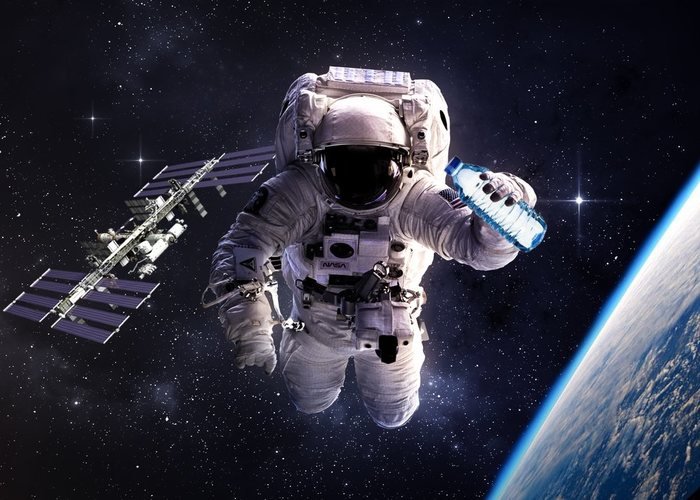A new study published in Nature explores how multi-species microbial populations affect potable water safety during space missions. It turns out, keeping these microscopic ecosystems in check is no easy task.
Background: Water, water everywhere…
The void of space is sterile and clean; then, humans show up and bring their gross tiny organic microbes with them.
Nowhere is this reality more potent than onboard the International Space Station (ISS). As astronauts spend time aboard the floating space station, living in pretty cramped conditions, biological material builds up, grows, evolves, and spreads about.
Though they be but little, the wrong viral and bacterial strains can be mighty fierce. Anyone who has experienced food poisoning knows the damage a single-celled organism can cause. And yes, heaving up last night’s sushi is horrible; now imagine you are floating in space.
This latest study explores the growth of microbes in the water system aboard the ISS.
For any space mission, clean water is essential. However, getting it up there is a daunting task- so NASA developed the Environmental Control and Life Support System, which removes the need to launch a rocket with the 40,000 pounds of water needed by the ISS crew on an annual basis.
The Environmental Control and Life Support System cleanses wastewater in a three-step process. Running two different filtration operations and a catalytic oxidation process, the water comes out free of any volatile organic compounds and microorganisms. Well, at least it is supposed to.
Analysis: What Are Biofilms?
Arizona State University’s Jiseon Yang, lead author of the study, and her colleagues identified different bacterial populations isolated over time from the water system aboard the ISS.
Yang and her team focused on the long-term historical record of what microbes live in the water aboard the station. Instead of looking at each species independently, they examined how these various species formed little collective ecosystems knowns as biofilms which could hinder space missions.
Biology has an excellent understanding of how individual microbes can affect human health. However, when various microbes hang out together, scientists are still unsure if that alters how they function. In other words, these biofilms are still a bit mysterious. Put them outside of Earth’s atmosphere, and we know almost nothing.
“Polymicrobial interactions are complex and may not be stable over time,” Yang stated in an ASU press release. “Our study provides in-depth phenotypic analyses of single- and multi-species bacterial isolates recovered from the ISS water system over multiple years to understand long-term microbial interactions and adaptation to the microgravity environment. The results from our study may improve microbial risk assessments of human-built environments in both space and on Earth”.
Using NASA’s achived microbial isolates collected from the water system aboard the ISS between 2008 and 2015, the team profiled five key phenotypes: antibiotic resistance, metabolism, hemolysis, and biofilm structure/composition of individual or multi-species communities.
Any one of these categories, or a mix of them, has the potential to impact astronaut health and the functioning of life support systems aboard the ISS.
“Data revealed a temporal dependence on interactive behaviors, suggesting possible microbial adaptation over time within the ecosystem,” the study states, concluding that “studies have reported reduced immune function in astronauts during spaceflight, which when coupled with alterations in virulence, biofilm formation and antibiotic resistance observed in some microorganisms during spaceflight, suggests an increased risk for infectious disease.”
Overall, the study’s results show that the waterborne bacteria isolates aboard the ISS exhibited some resistance to several antimicrobial compounds, such as antibiotics, and that complex biofilms formed. One specific bacterial isolate found aboard the ISS, Burkholderia, displayed hemolytic activity (the ability to destroy red blood cells), indicating that astronaut health could be at risk.
Outlook: Can I Drink the Water?
The water on the ISS is safe for now. Still, this study explores how that situation can change over long periods, and more importantly, how these various microbes work together to create possible health effects.
The boil down for the research team is to look at how the ISS currently handles the generation of potable water, and in the design of future systems, how to better mitigate the growth and development of microbes present in the water. It is clear that humans drag all these bacteria up into space with them, but what is unclear is how all those microorganisms evolve in space and how their various evolutionary paths work together.
As humans look to long-term bases on the lunar surface and missions to Mars, access to water is essential. A million things can go wrong in any space mission; the last thing anyone needs to worry about is whether the water is safe to drink.
Follow and connect with MJ Banias on Twitter: @MJBanias

